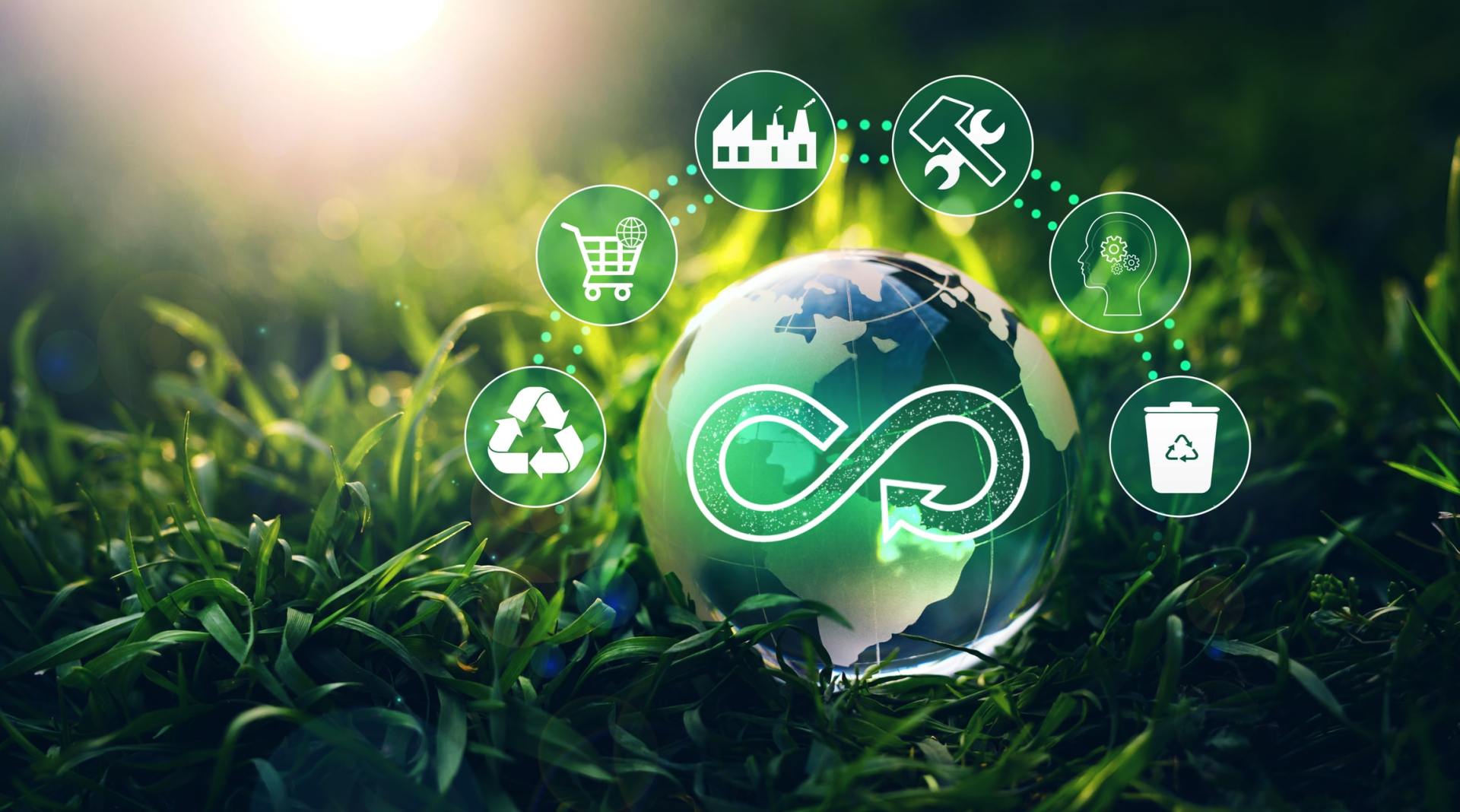A popular strategy in the effort to control our very serious problem with pollution is to move toward a more circular economy. But what exactly does that mean?
To understand the concept of a circular economy, think first about the life of a plastic soda bottle.
Oil and gas, two virgin materials, are heated and distilled to make plastic. This plastic material gets shaped into a bottle and sent to a manufacturer to package a product. This product gets sold to a consumer who drinks the soda. When finished, the bottle is likely thrown in the trash, eventually joining millions of other bottles in a landfill.
The bottle turns into waste, the bottle's materials aren't reused, and dirty energy gets used to make all of this happen, from distillation to transportation.
Now, compare that to the lifecycle of a tree.
A seed gets planted, sprouts, grows into a young tree, matures, and decays. Organisms like fungi and earthworms decompose the decaying tree, creating vital nutrients for the soil. The soil provides nutrients for the next seed planted, continuing the cycle.
No trash gets generated, nutrients return to the soil, and the only energy used is provided by the sun.
In these two examples, the plastic bottle represents a linear economy, which describes how we currently operate, while the tree represents a circular economy, which many hope to achieve.
What is a circular economy?
The Ellen MacArthur Foundation defines a circular economy as an approach to economic development that is "restorative and regenerative" and revolves around three principles: develop without waste and pollution; reuse products and materials; and restore natural systems.
This approach stands in stark contrast to the current linear model, which the foundation refers to as a "take-make-waste system," because it takes raw materials, makes a product, and then creates waste when this product becomes damaged or is no longer usable.
But we can use the model of the natural lifecycle to inform our economic decisions today to reduce pollution, conserve resources, and use clean energy.
Heeseung Kim, a former researcher at the University of Michigan's Center for Sustainable Systems, explains that circular economies operate by keeping energy, materials, and resources in the economic system for as long as possible to use them to their fullest. A perfect circular economy in action makes pollution and waste completely obsolete.
To accomplish this, all the product design and production within a circular economy must ensure that the waste of one product will become the raw material for another, as a decaying tree becomes fertilizer for a new seed. Furthermore, clean energy sources are used in production instead of dirty energy, like oil and gas, which produce harmful pollution.
How did we get to a linear economy?
Industrialization and the rise of single-use plastic started humankind's transition from a mostly circular economy to a wasteful linear economy.
Plastics refer to any material that is pliable, and they aren't always synthetic; rubber is natural and comes from a rubber tree. It wasn't until 1907 that the first fully synthetic plastic was made. Chemical companies soon followed, creating and using new forms of plastics.
New plastic inventions like Plexiglass and Nylon furthered the popularity of plastic, but WWII was the catalyst in the plastic boom. The production of plastics grew an astounding 300% during the war and continued to expand.
The plastic boom removed many natural products from manufacturing processes, meaning products could no longer return to the Earth. This boom transformed our circular economy into a linear economy reliant on single-use plastics.
Today, the repercussions of the plastic boom are apparent, from plastic overwhelming our oceans to toxic chemicals polluting our air and hurting our communities.
How do we get back to a circular economy?
Circular economies were practiced for centuries, and it is possible to return to them.
Collectively, we can achieve a semi-circular model for our economy in various ways, from individual action to international changes.
First, we must consume less. One of the most practical ways to reduce consumption is to rethink ownership. Do we need that gadget that we've only used a total of 15 minutes in the five years we've had it? If the answer is no, then you might rethink buying new appliances.
Instead of owning things, we could lease things, like appliances, from their manufacturers. Leasing products could streamline the repair process and avoid waste, allowing products to be disassembled and regenerated by their makers.
Second, we can consume more thoughtfully. By buying only items made using safe materials and practices, we use our consumer power to pressure businesses to change their practices.
Burger King's pilot program for reusable packaging is an example of a brand providing customers with the option to consume more thoughtfully. Customers pay a small deposit that's refunded when they return the reusable packaging.
Third, we need governments to make policies that provide financial incentives for businesses that promote a circular economy. One example is to tax products made entirely from virgin materials rather than recycled materials.
Creating a circular economy offers $4.5 trillion in economic opportunities by eliminating waste, reusing materials, stimulating business growth, and providing new job opportunities, according to the World Resources Institute.
It is vital to make changes that encourage a circular model for our economy, because it would address issues of excess trash, resource scarcity, and air pollution, all while allowing people, economies, and nature to prosper.
This model is well worth the investment.








